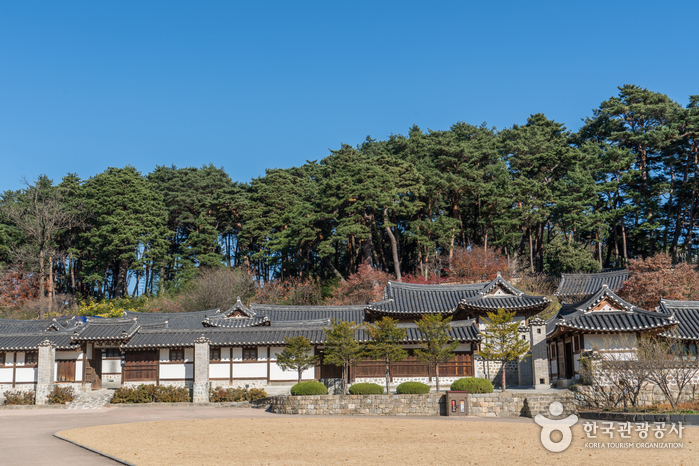Welcome to Seongyojang House, a hidden gem nestled in the heart of Gangneung, South Korea. As a 11th-generation descendant of Grand Prince Hyoryeong, the historical significance of this house is truly awe-inspiring. This beautifully preserved traditional hanok building has witnessed the passage of time, with repairs and extensions made over the course of ten generations.
As you step into Seongyojang House, you’ll be greeted by a collection of rooms and buildings, each with its own unique charm. With twelve gates spread throughout the property, you’ll have the opportunity to explore and discover the hidden corners of this architectural masterpiece. From the three ‘Byeoldang’ rooms – Dong, Seo, and Oe – to the Sarangchae, Jungsarang, Haengangchae, and Sadang, every space has a story to tell.
Seongyojang House holds a special place in Korean history as one of the largest and most magnificent houses of its time. It’s fascinating to learn that its grandeur was influenced by the classical poem, Gwandongbyeolgok, written by Jeong Cheol. This poem sparked a cultural trend among noblemen during the late Joseon Dynasty, leading them to visit the Gwandong area. Seongyojang became a must-see attraction, drawing visitors from far and wide.
Despite facing a crisis when only three people remained in this vast building, the director of Seongyojang House, Lee Kang-baek, went to great lengths to preserve his ancestors’ invaluable heritage. With the support of the local administration, the house underwent modernization, ensuring the comfort of its guests without compromising its traditional beauty. You’ll now find modern toilets and shower facilities seamlessly integrated into the hanok design.
As you explore the grounds, you’ll come across many remarkable structures that showcase the architectural prowess of the time. Hwallaejeong Pavilion, with its captivating charm, is bound to leave a lasting impression. Yeolhwadang, a gift to the Russian Consulate, stands as a testament to the house’s international connections. Yeonjidang, built in an elegant style, exudes grace and refinement. And Seobyeoldang, another notable building, offers a glimpse into the artistic talents of the literati who frequented the house.
One of the most intriguing aspects of Seongyojang House is the ever-changing signboard of Hwallaejeong. Throughout history, it was regularly rewritten by members of the Joseon literati who stayed in the house. The most famous version was penned by Gim Jeong-hui, a literary genius known by his pen-name, Chusa.
Seongyojang House is not just a tourist spot; it’s a living testament to the rich cultural heritage of Korea. Whether you’re a history enthusiast, an architecture lover, or simply seeking a tranquil escape, this is a destination that will captivate your heart and mind. Come and immerse yourself in the beauty and history that Seongyojang House has to offer.

